Juniperus virginiana – Eastern Red Cedar
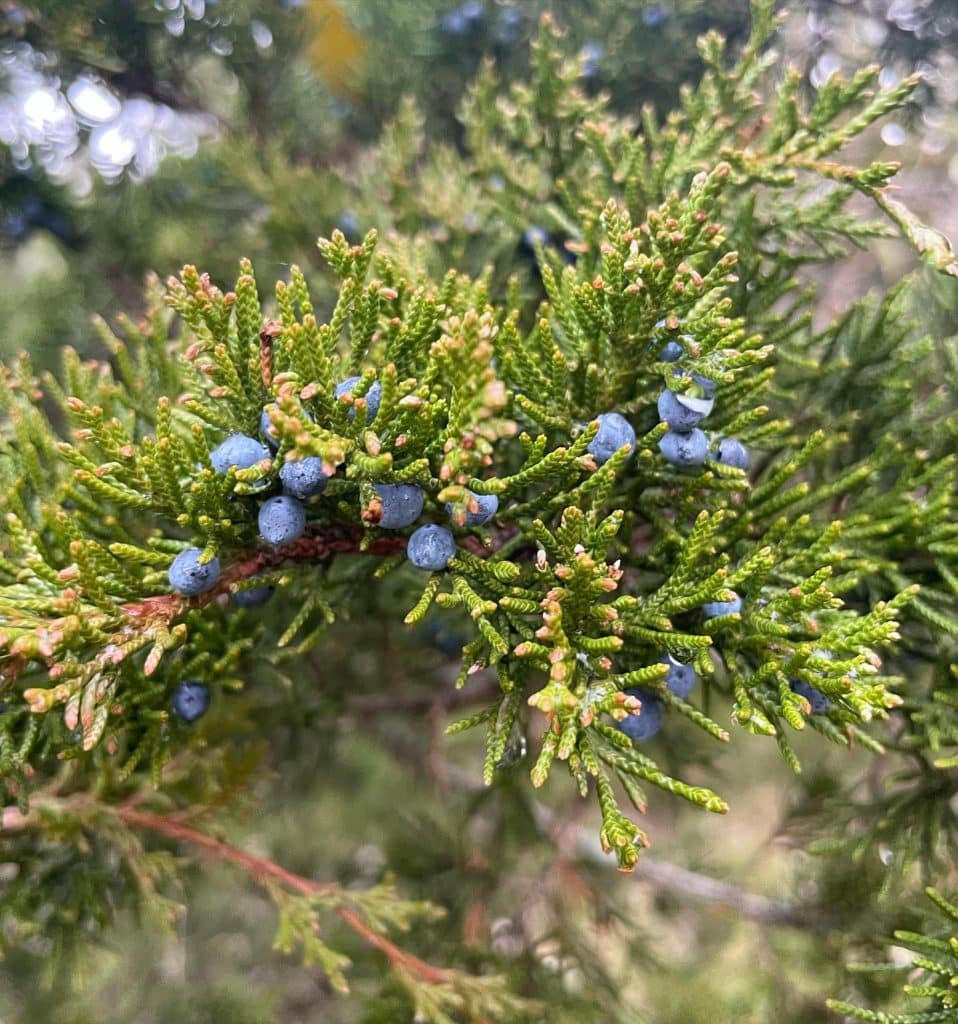
Eastern Red Cedar (Juniperus virginiana) is a native tree that produces edible seed cones, also known as “juniper berries”. Eastern red cedars produce two types of needles. The young needles are short and sharp. The older needles are scale-like. The seed cones, or “berries”, take three years to mature. They are ready to harvest when […]
Berberis thunbergii – Japanese Barberry
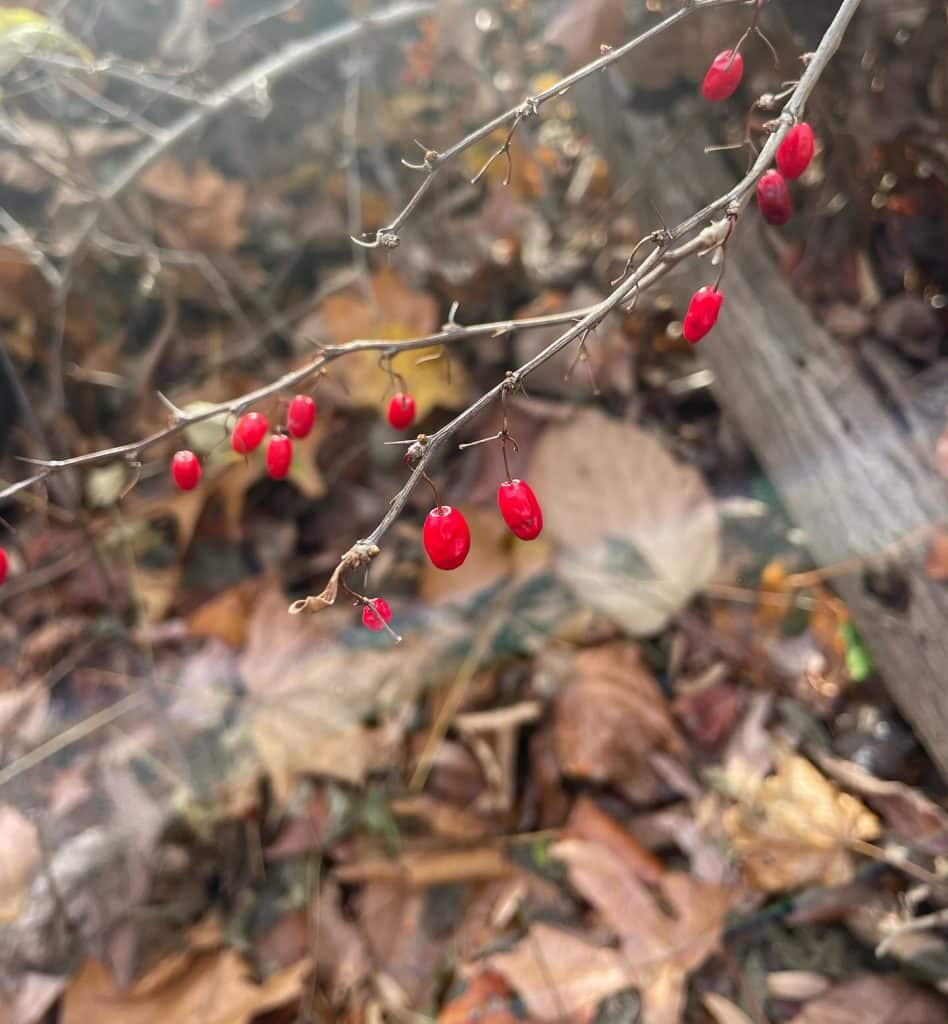
Japanese Barberry (Berberis thunbergii) is an invasive plant with edible and medicinal berries that persist through the winter. Japanese barberries can be found in forest clearings and overgrown fields. In the spring, the plant produces edible small leaves that are accompanied by a single spine. The plant has yellow flowers in the spring which become […]
Opuntia humifusa – The Eastern Prickly Pear
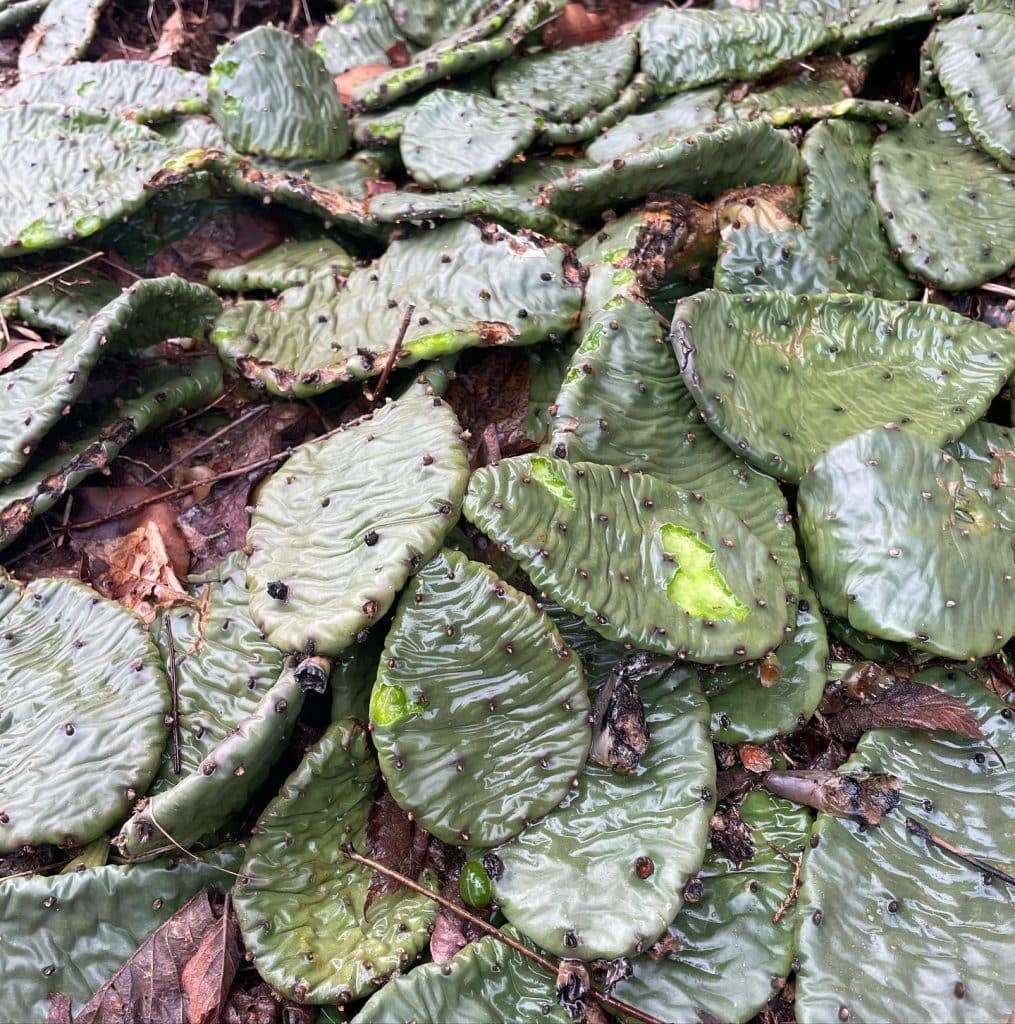
Eastern Prickly Pear (Opuntia humifusa) is a cactus that is native to Connecticut. The Eastern prickly pear can be found in sunny, dry environments. It prefers sandy, rocky soil and tends to form large colonies. The Eastern prickly pear can survive freezing temperatures due to high levels of glucose in its cells. The cactus has […]
Gaultheria procumbens – Teaberry
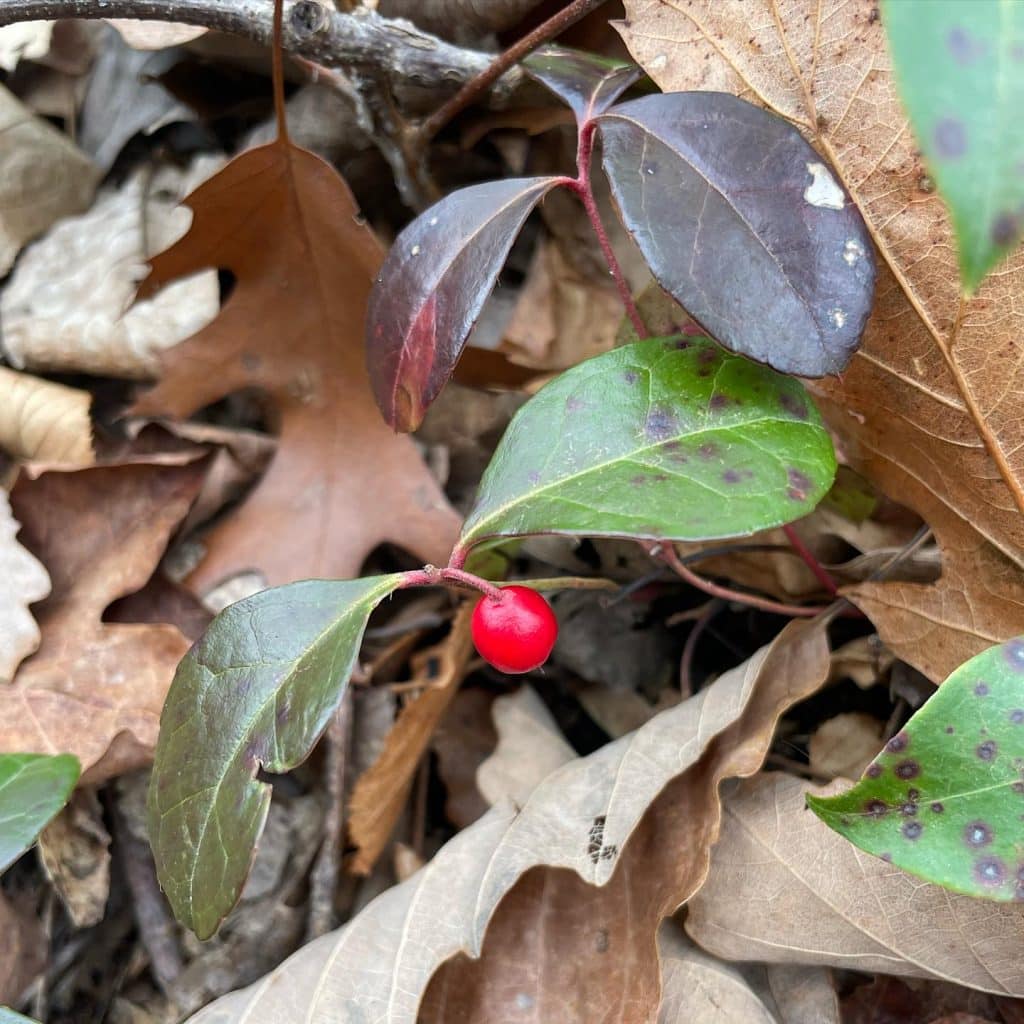
Teaberry (Gaultheria procumbens) is a native, low growing evergreen shrub that can be found across North America. Teaberry, also known as American wintergreen, can be found in areas with acidic soil and abundant rain. It grows in dense carpets, spreading by rhizomes. Teaberry has leathery evergreen leaves. The plant produces white or light pink bell-shaped […]
Urtica dioica – Stinging Nettle
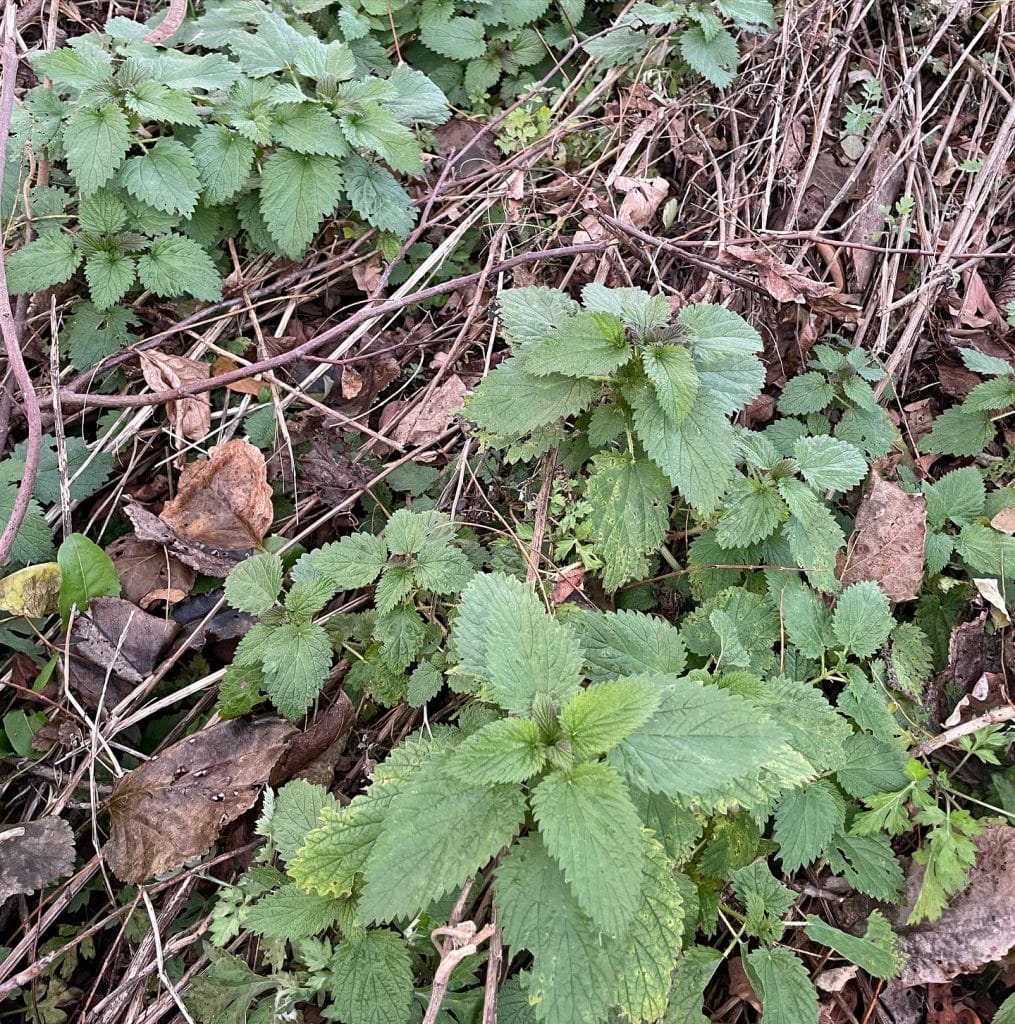
Stinging nettle (Urtica dioica) is a highly nutritious plant that can be found throughout the continental United States. There are multiple subspecies of stinging nettle. American stinging nettle (Urtica dioica subsp. gracilis) is native to North America. Stinging nettle has opposite, heart-shaped leaves with toothed margins. The plant produces small gray-green flowers that dangle like […]
Crataegus spp. – Hawthorn
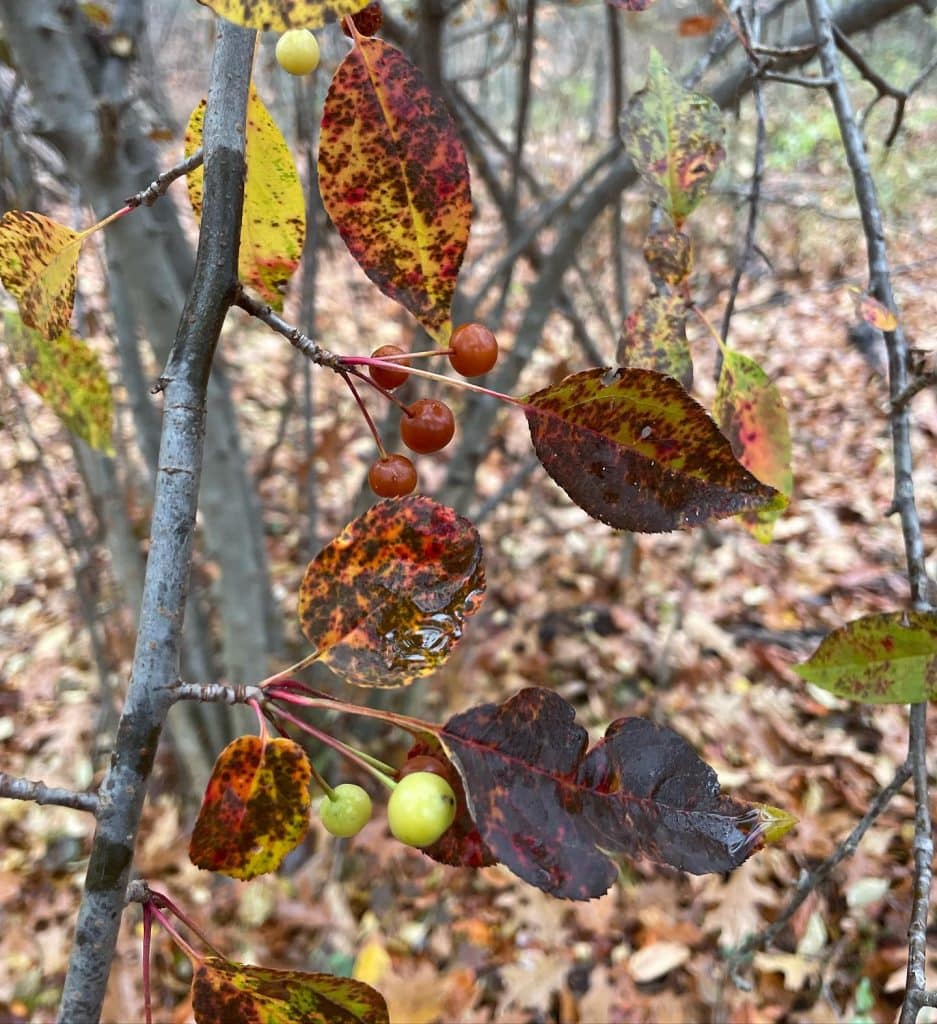
Hawthorn (Crataegus spp.) is a group of over 1,000 species of edible plants in the rosaceae family. Hawthorn is the oldest known medicinal herb, with use dating back to the first century BC. It could be a small shrub or tree. Hawthorn has serrated, oval-shaped leaves which often have lobes. The branches have sharp […]
Verbascum thapsus – Common Mullein
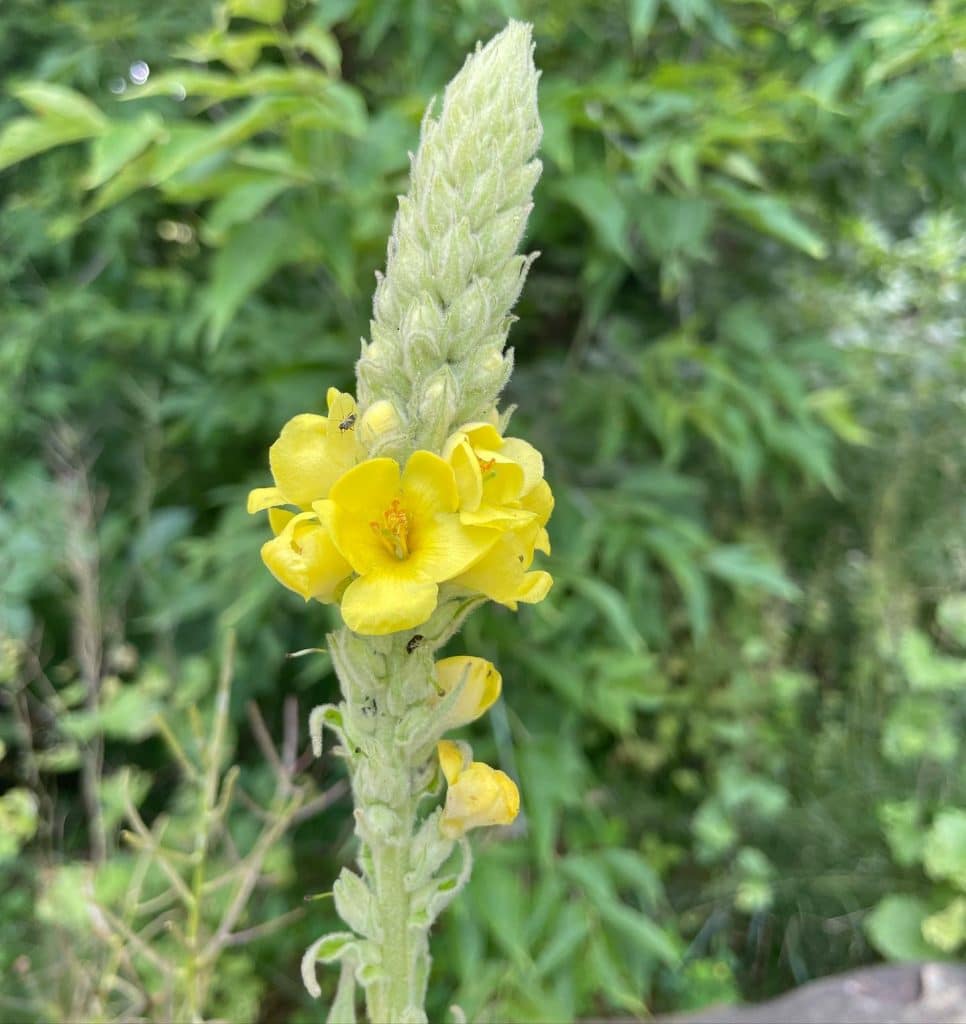
Common mullein (Verbascum thapsus) is a non-native plant with a myriad of medicinal benefits. Mullein can be found growing in sandy or rocky soil in full sun. It is often found in waste places. Mullein is a biennial. The plant produces a basal rosette of fuzzy leaves it’s first year. The second year it sends […]
Morella pensylvanica – Northern Bayberry
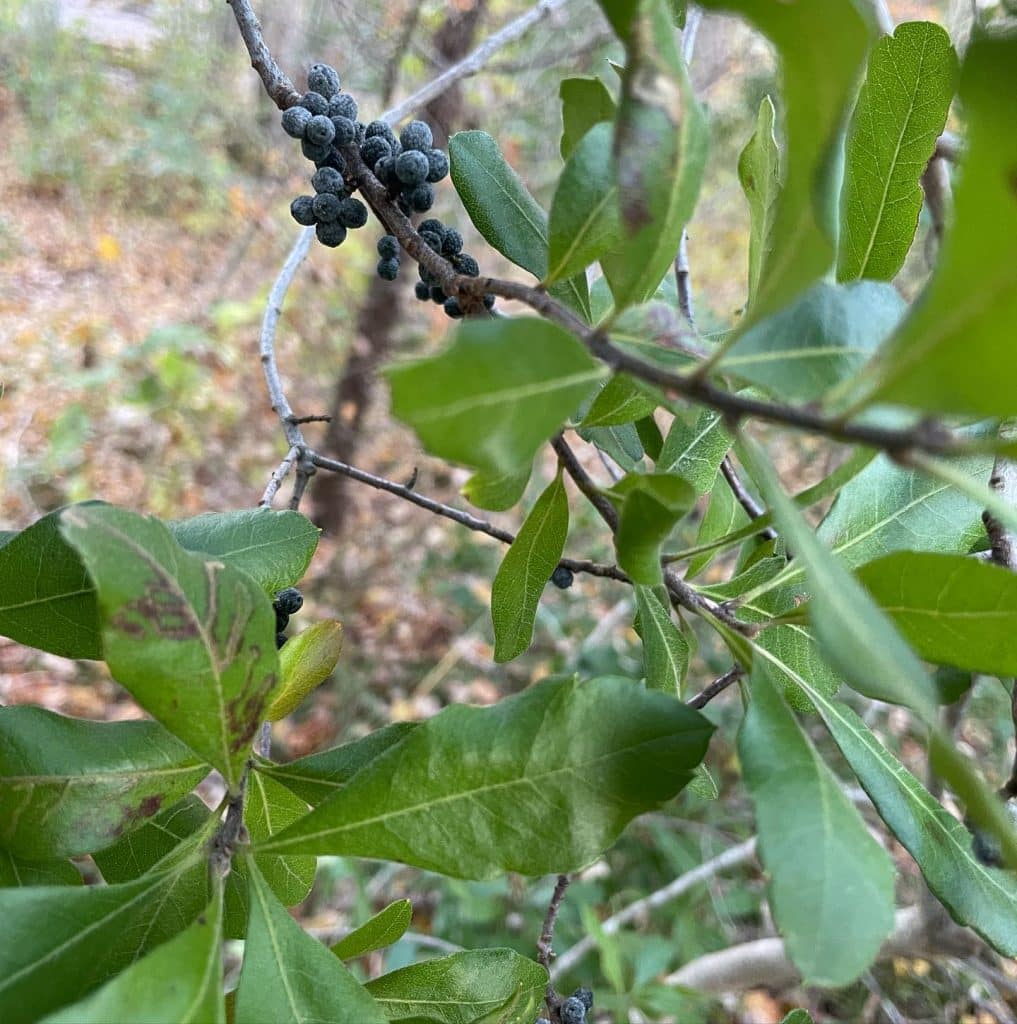
Northern Bayberry (Morella pensylvanica) is a native shrub that can be found on coastlines and in swampy woodlands. Northern bayberry has alternate, waxy leaves which have a few shallow teeth at the tip end. The shrubs produce clusters of bluish gray fruits in the fall. In the spring, the tender leaves can be used fresh […]
Rhus copallinum – Winged Sumac

The Winged Sumac (Rhus copallinum) is a native plant with edible fruits. The winged sumac is in the same family as cashews, poison ivy, mangoes, and pistachios. Winged sumac has compound leaves which turn red in the fall. Fruit clusters can persist throughout the winter. All berries of red sumacs are edible. The berries produce […]
Vitis aestivalis – Summer Grapes
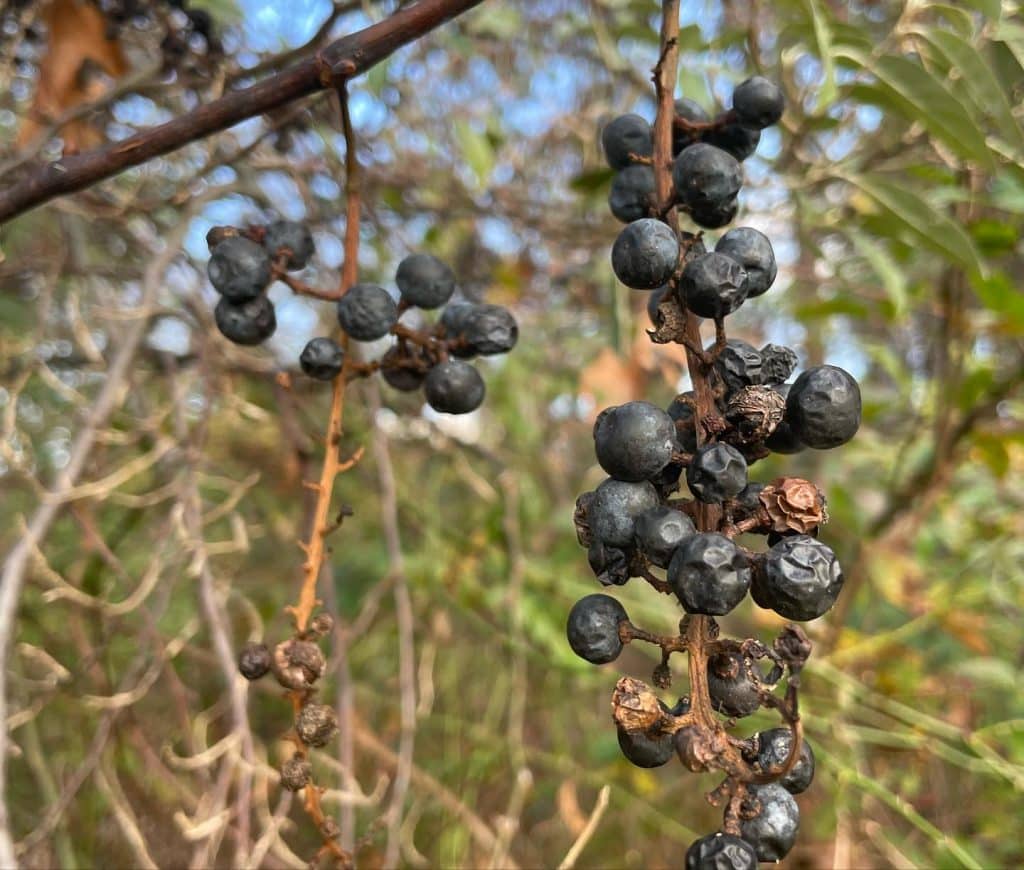
Summer grapes (Vitis aestivalis) are a native grape species that ripen in early November, when the berries turn deep purple. The first frost helps to sweeten the grapes. Wild grapes can be identified by their large three-lobed leaves, and mature dark brown, shaggy bark. Wild grapes can be enjoyed raw or turned into jelly. […]
Quercus rubra – Northern Red Oak
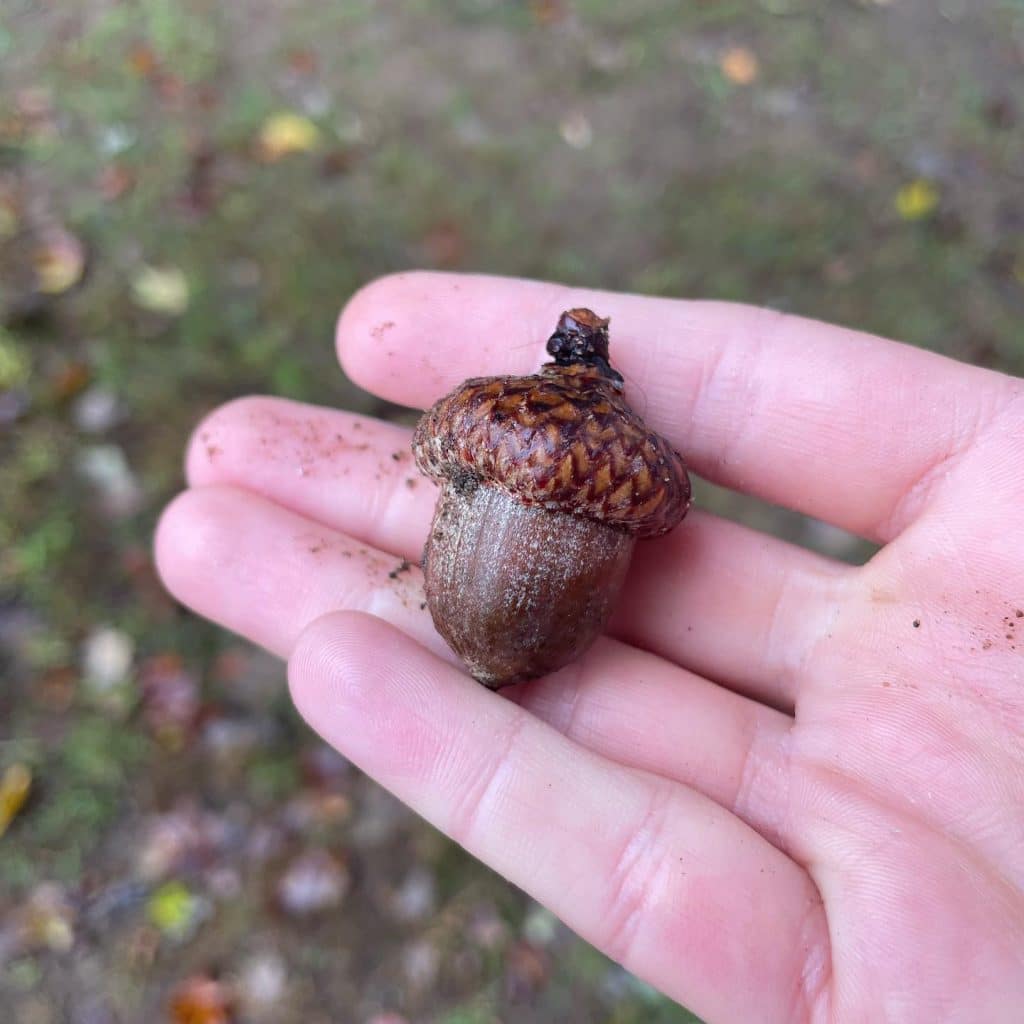
The Northern Red Oak (Quercus rubra) is a fast growing tree that can reach up to 80 feet tall. Northern red oaks can live up to 400 years old. There are two major groups of oak trees. Red and black oaks have sharper lobes that end in a point and nuts that take two […]
Carya ovata – Shagbark Hickory
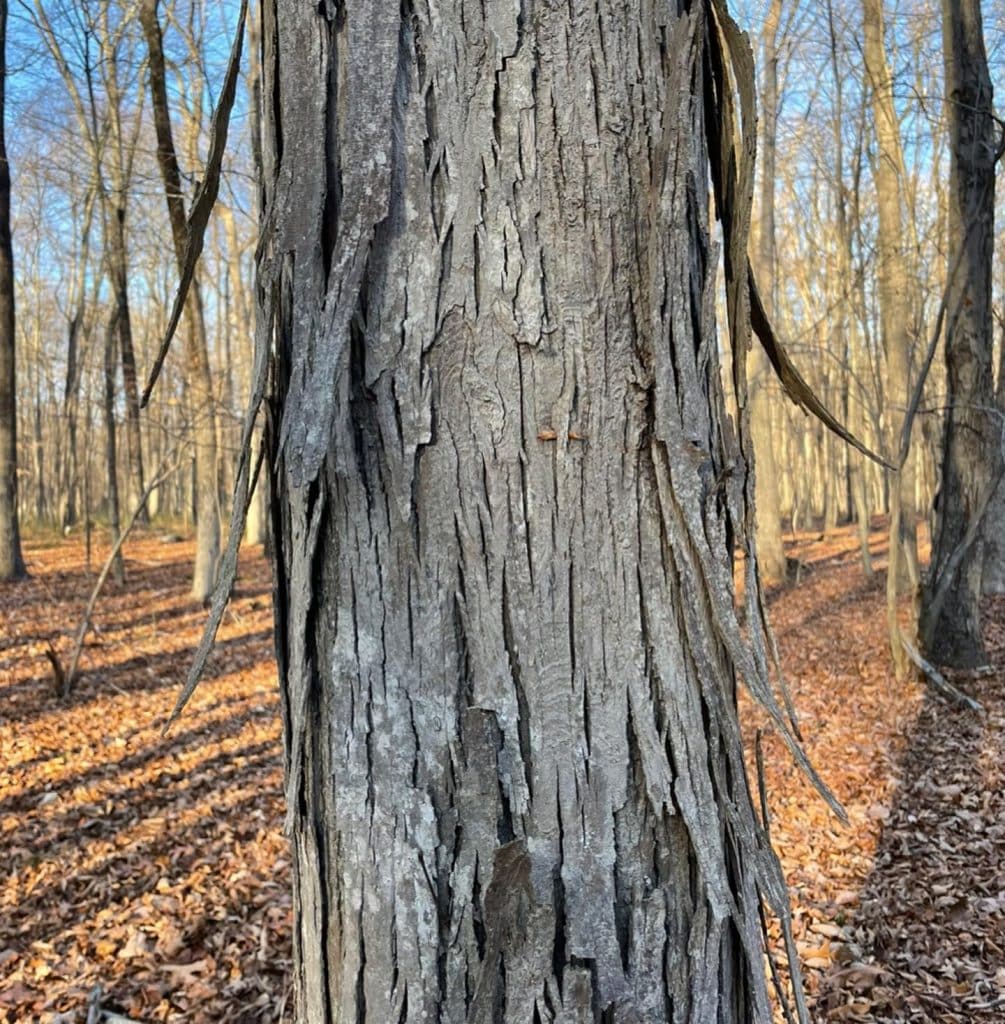
Shagbark hickory (Carya ovata) is a native tree with edible nuts and bark that can be used to make a maple syrup substitute. Shagbark hickory is one of the easiest trees to identify with its bark that peels off the tree. In the summer, the tree has leaves with five leaflets. In the fall, […]
Albizia julibrissin – Mimosa Tree
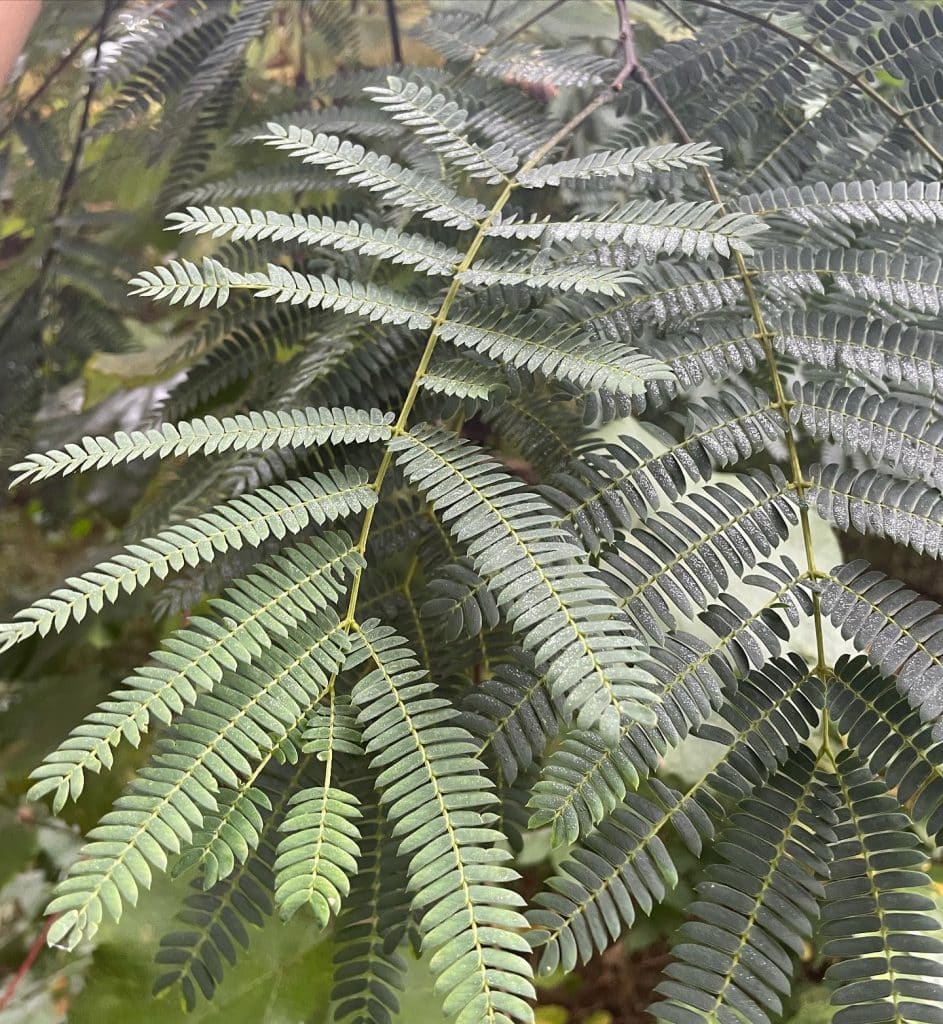
The Mimosa tree (Albizia julibrissin) is an invasive tree from Asia and the Middle East. The mimosa tree has fern-like leaves and silky pompom flowers in the summer. The flowers become flat paper brown seed pods in late summer. Young mimosa leaves can be eaten cooked or dried and used for tea. Blossoms can be […]
Tilia americana – American Linden
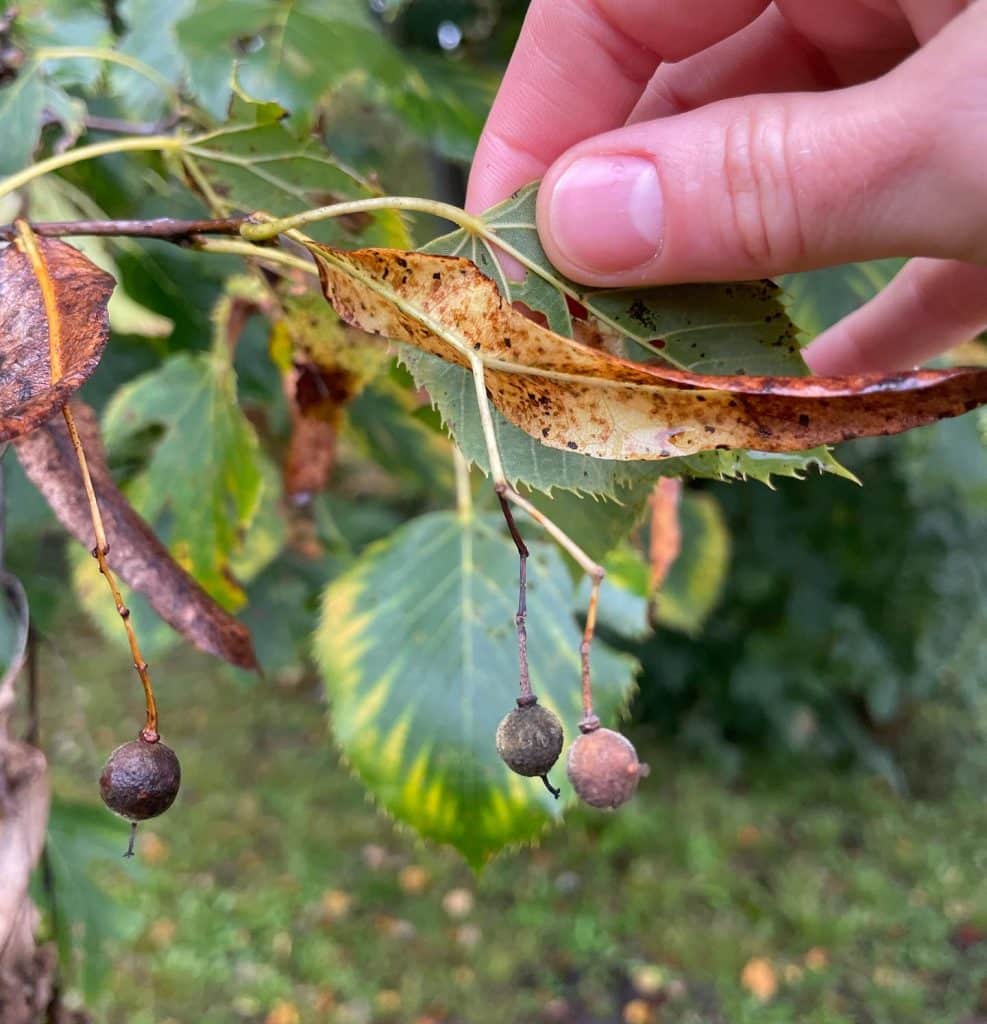
The American Linden (Tilia americana) is a native tree with edible leaves, flowers, sap, and inner bark. The American linden has finely serrated heart-shaped leaves. The flowers and seeds hang downward from elongated leafy bracts. The fragrant flowers bloom for about two weeks in the middle of the summer. American linden leaf buds can be […]
Malus spp. – Wild Apples
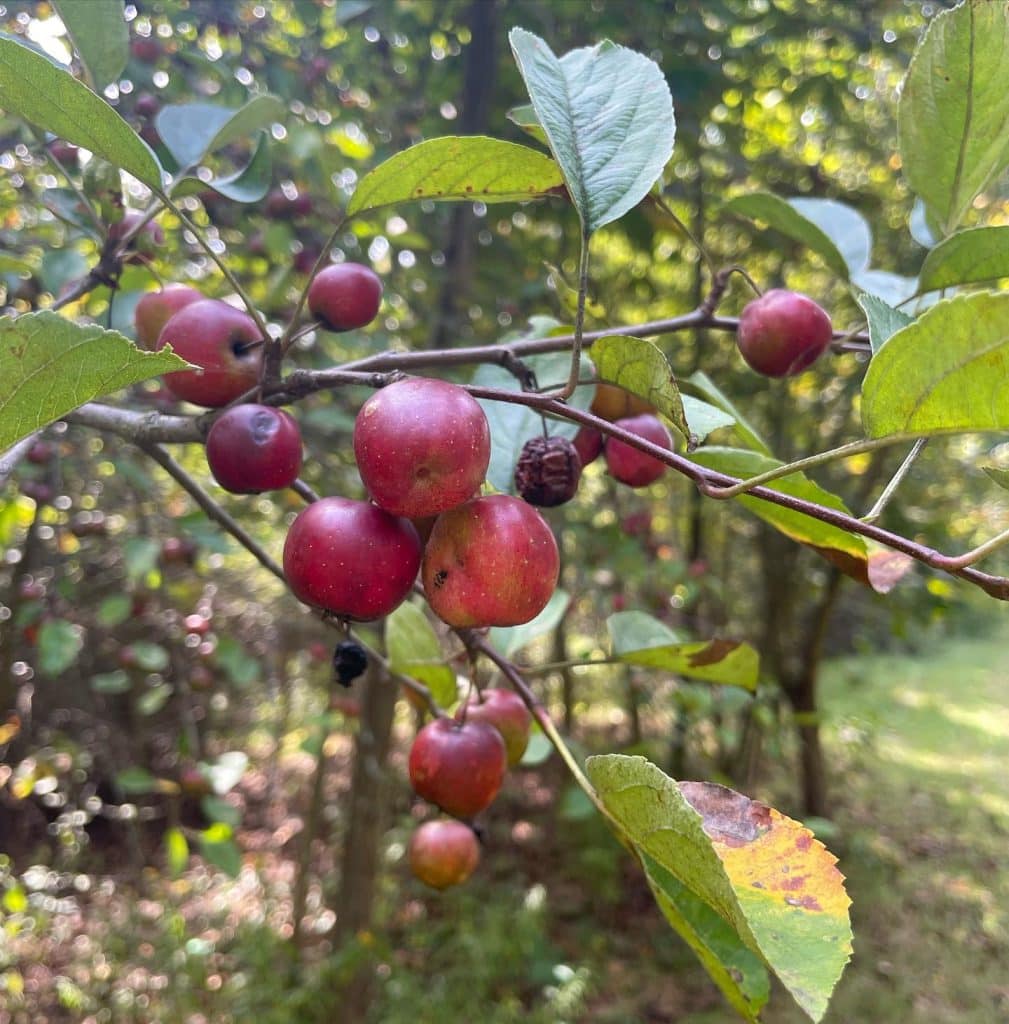
Wild Apples (Malus spp.) are apple trees that grew from seed. The apples are considered crab apples if the fruit is less than 2 inches in diameter. There are over 40 species of crab apples across the world and 4 species that are native to the United States. Two of these species can be found […]
Maianthemum racemosum – False Solomon’s Seal
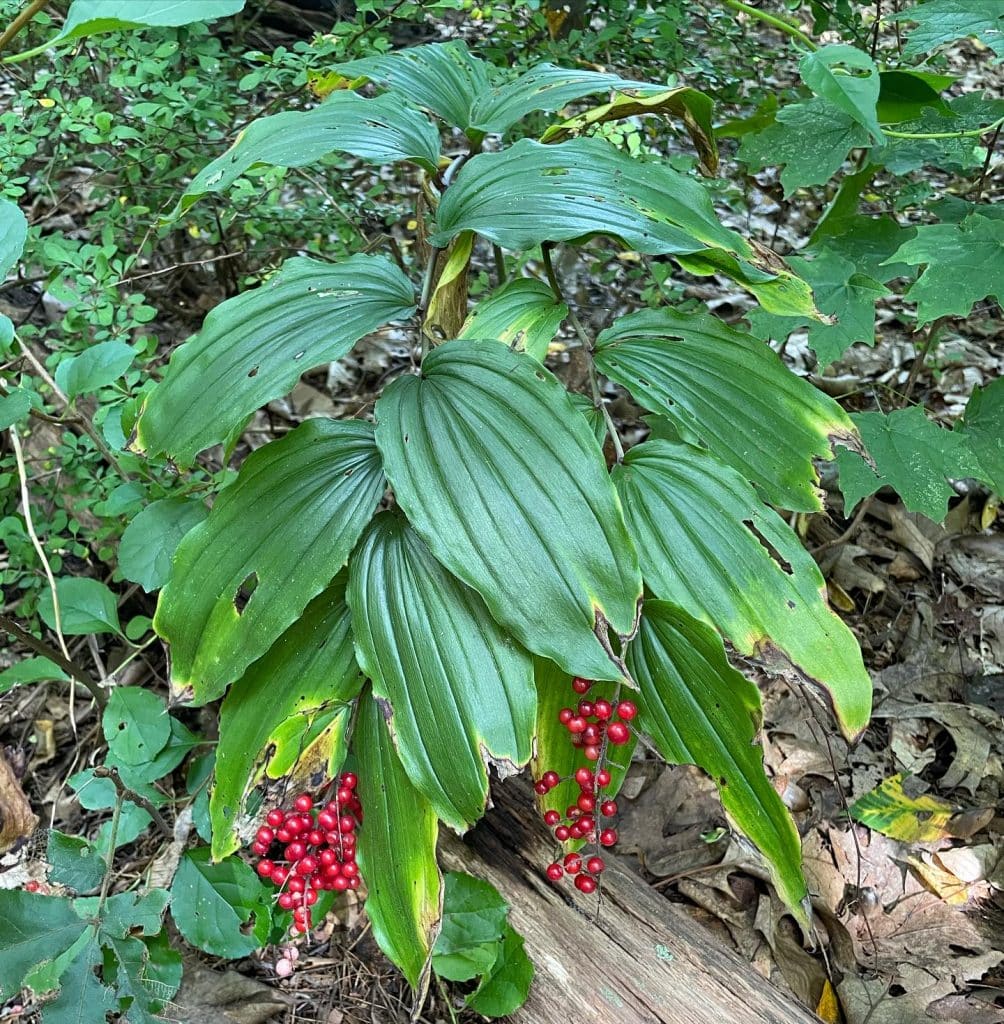
False Solomon’s Seal (Maianthemum racemosum) is a native woodland plant with edible berries. False Solomon’s seal has a long, arching stem and berries that turn bright red in late summer. It is in the Asparagus family. Berries are edible, but bittersweet. Berries should be eaten in moderation as large quantities can have a laxative effect. […]
Aronia melanocarpa – Black Chokeberries
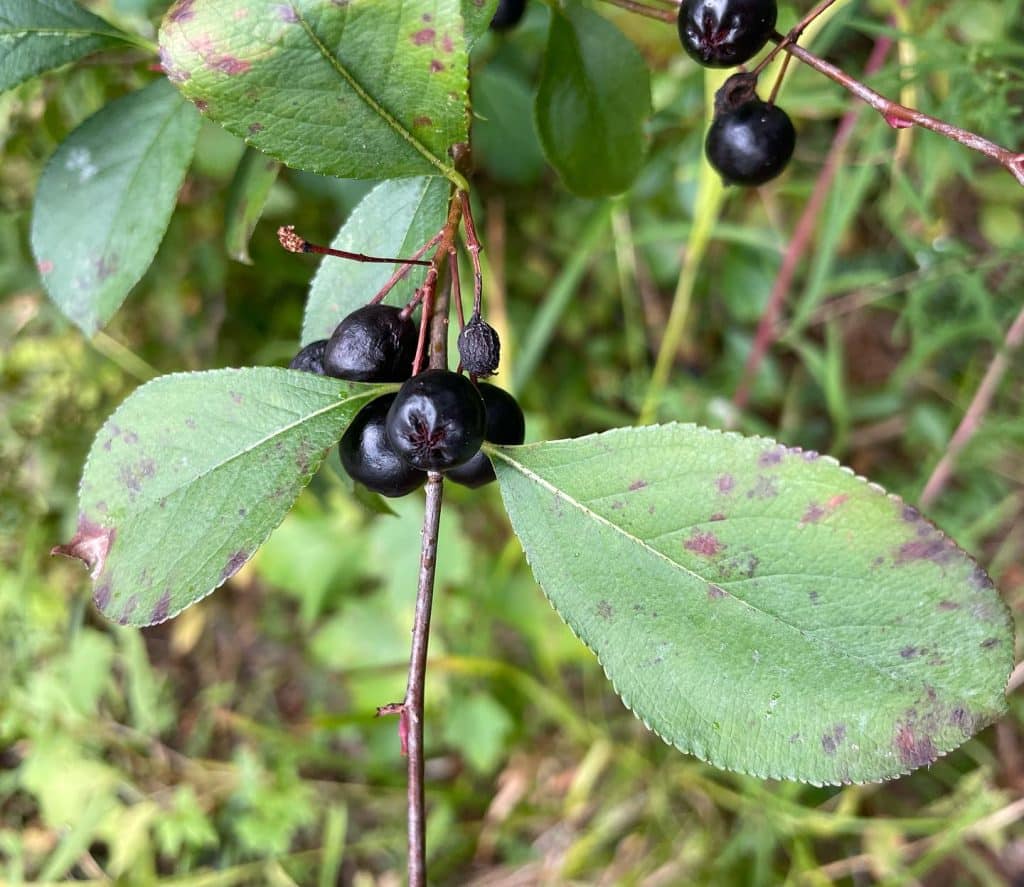
Black Chokeberries (Aronia melanocarpa) are edible, native berries that mature in early Fall. Black chokeberries can be found near swamps, bogs, and lakes. They prefer wet areas. The thornless shrub is self-fertile, so you only need one plant to get berries. Each berry grows on its own stem, in clusters of 2-20 berries. Leaves […]
Maianthemum canadense – Canada Mayflower
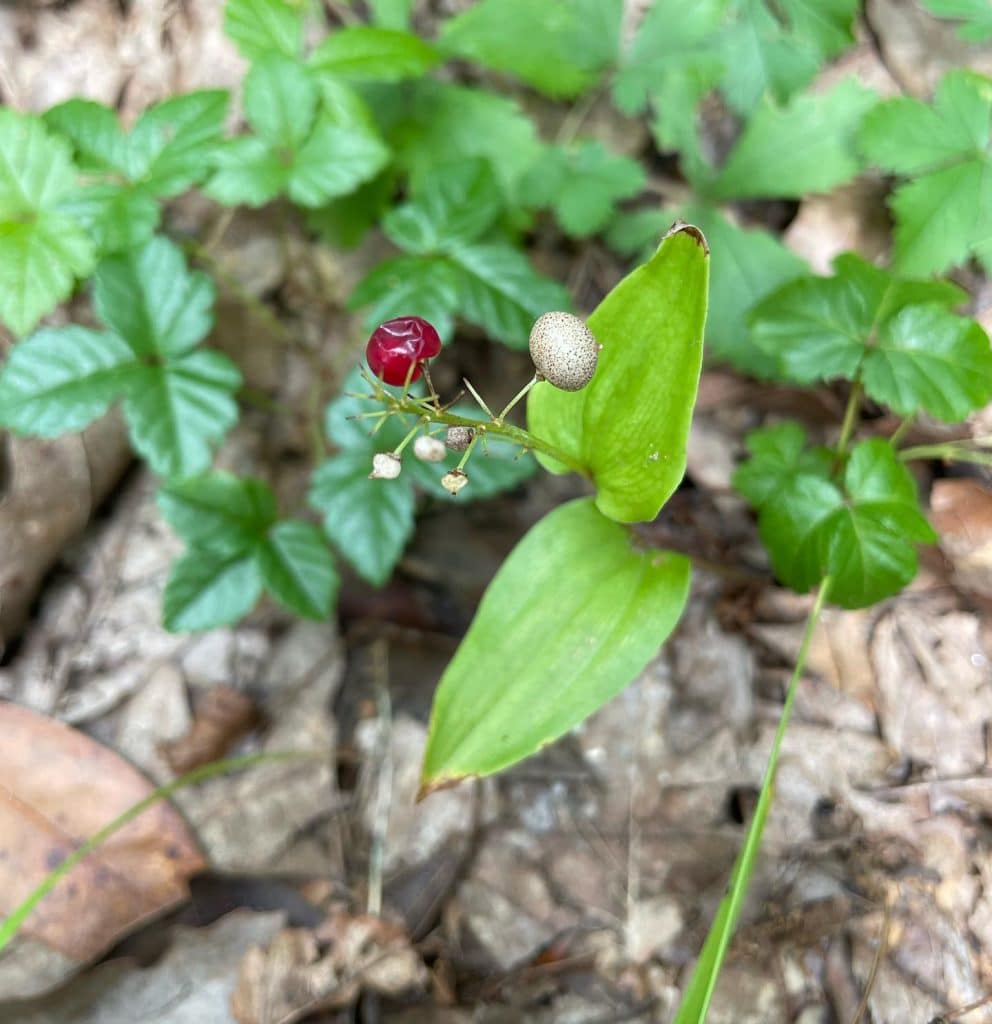
Canada Mayflower (Maianthemum canadense) is a native plant that can be found on forest floors. Canada mayflower has 1-3 shiny dark green leaves. The plant is less than 6 inches tall. In the fall, the plant has small red berries that have 1-2 seeds per berry. Fully ripe berries are edible raw or cooked. They […]
Rhus glabra – Smooth Sumac
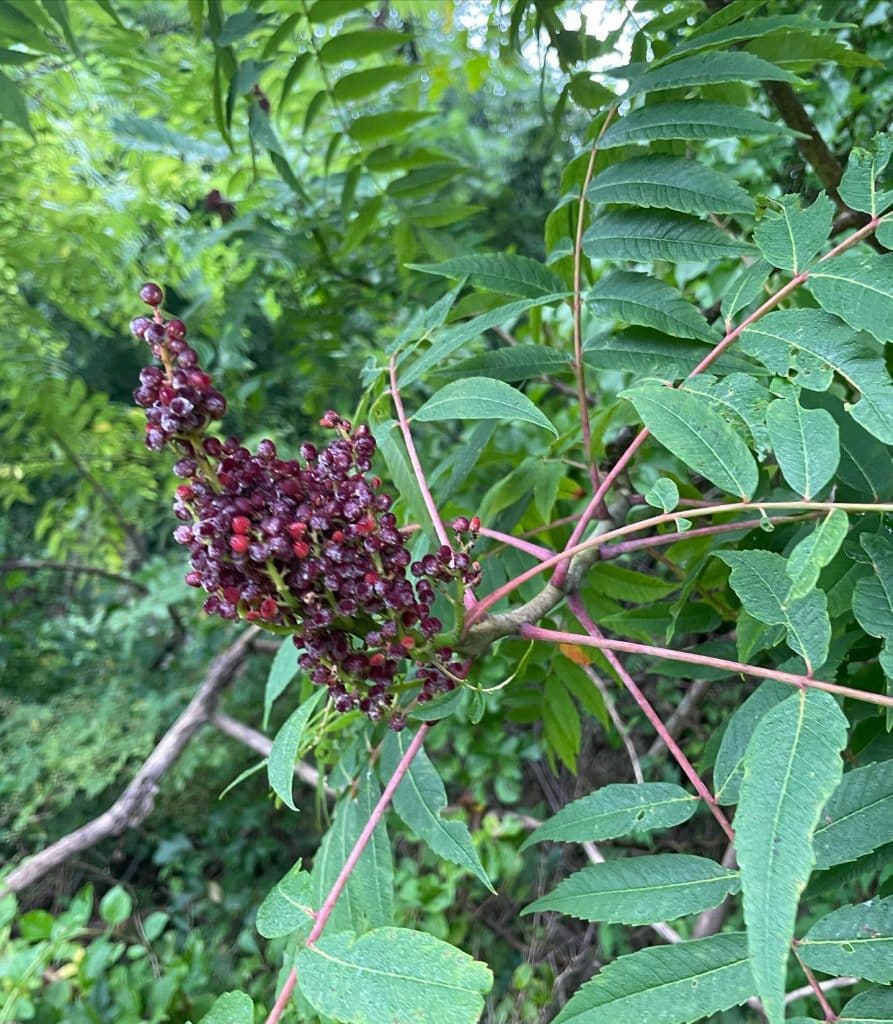
Smooth Sumac (Rhus glabra) is a native woody shrub with edible berries. Smooth sumac has 11-31 pointed leaflets per leaf. Female plants will produce upright berry clusters, or drupes, that ripen to a dark red color in late summer. The berries can be picked through winter. Smooth sumac can be differentiated from Staghorn sumac (Rhus […]
Sambucus canadensis – Elderberries
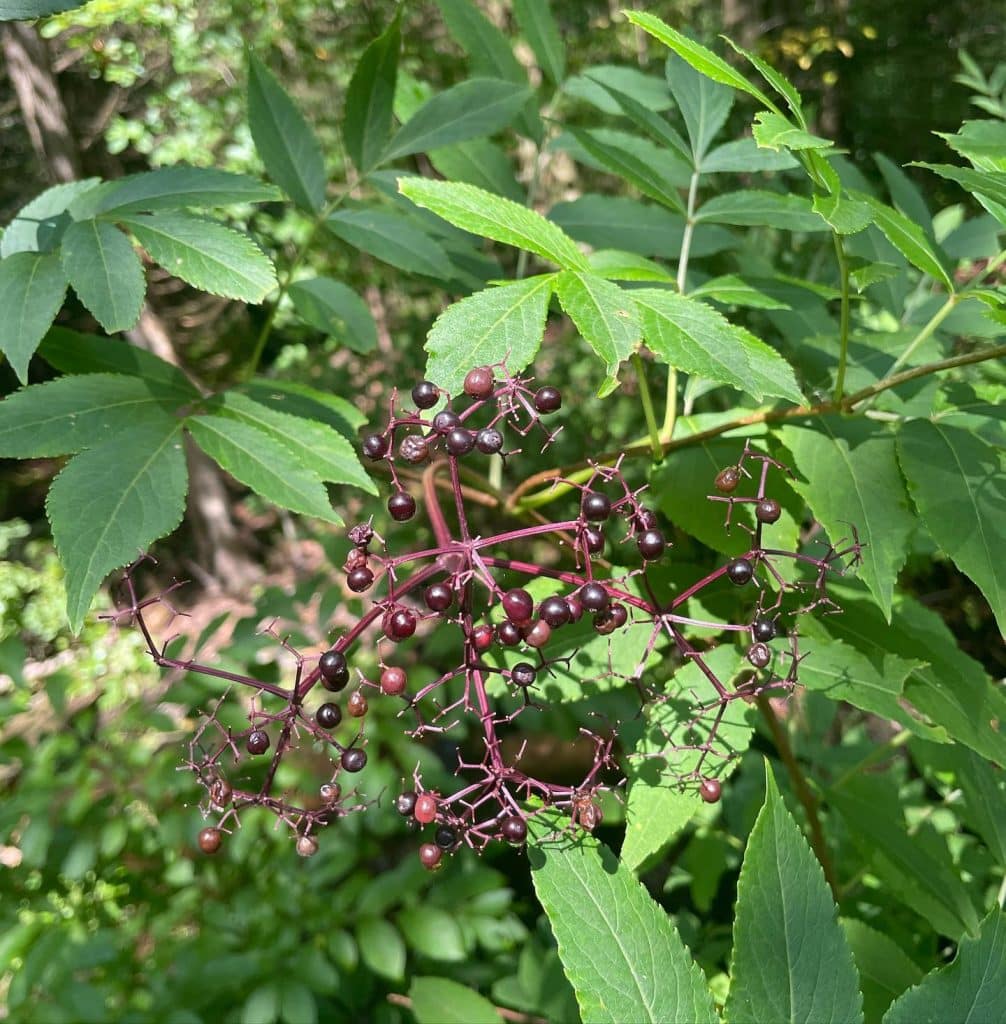
Elderberries (Sambucus canadensis) are a native woody shrub that like to grow near water. Elderberries hang down in a cluster at the end of the branch. The leaves grow in 5-11 leaflets that are opposite and serrated. Elderberry leaves and stems are toxic. Berries should be cooked, and seeds removed to avoid stomach upset. Elderberry […]
